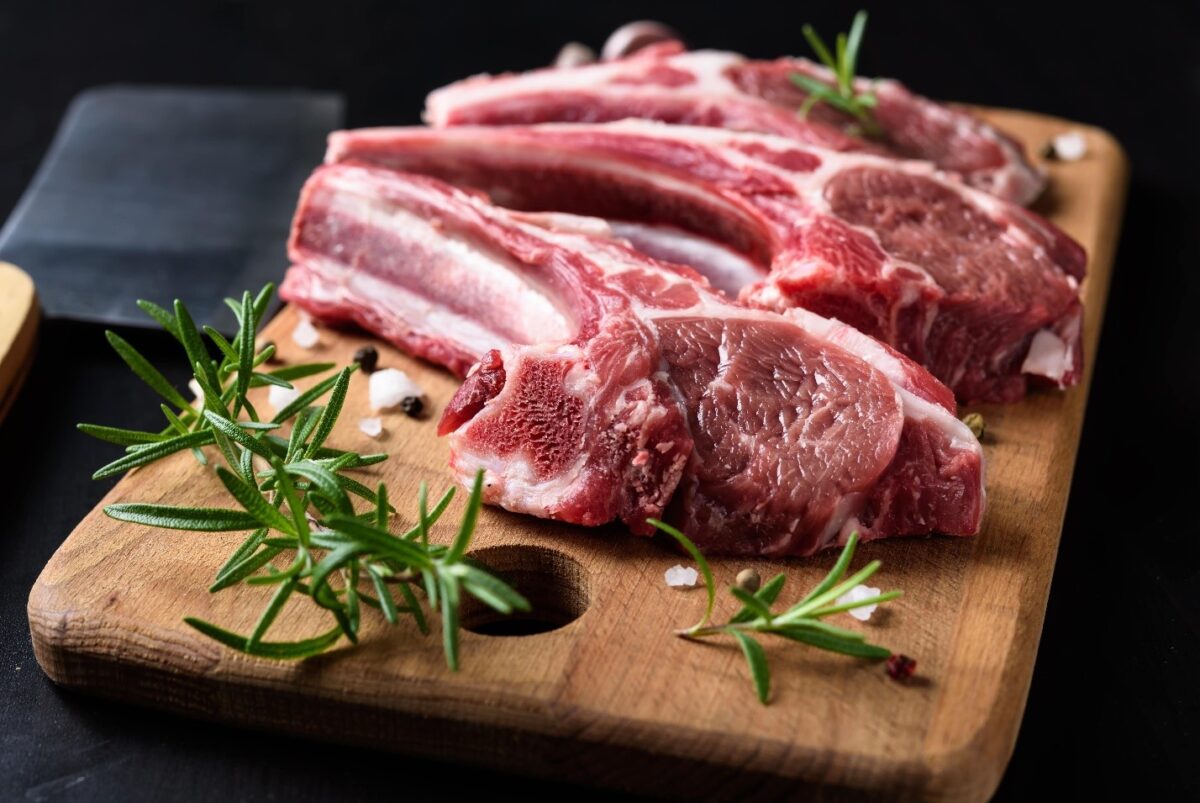Lamb is a versatile and flavorful meat that has been enjoyed in cuisines worldwide for centuries. Whether it’s a hearty stew, a perfectly grilled chop, or a slow-roasted leg, lamb offers a wide range of culinary possibilities. For home cooks, understanding the various cuts of lamb and their ideal cooking methods is key to unlocking the meat’s full potential. Superior Farms of Denver explores the characteristics of popular lamb cuts and offers tips on how to prepare them to perfection.
1. Leg of Lamb
Characteristics: The leg of lamb is one of the most popular cuts, often associated with special occasions and family gatherings. This cut comes from the hindquarters of the animal and is known for its lean meat and robust flavor. It’s typically sold whole, as a half-leg, or deboned and butterflied for easier cooking.
Ideal Cooking Methods:
- Roasting: The leg of lamb is best suited for roasting, which brings out its natural juices and rich flavor. Roasting it bone-in adds an extra layer of depth, while a boneless leg can be stuffed and rolled for an impressive centerpiece.
- Grilling: Butterflied leg of lamb is a fantastic option for the grill. Marinate it in garlic, rosemary, and olive oil, then cook over medium heat for a smoky, tender result.
Cooking Tips:
- Allow the lamb to come to room temperature before cooking to ensure even doneness.
- Use a meat thermometer to monitor internal temperature. Aim for 135°F (medium-rare) to 145°F (medium) for optimal results.
2. Lamb Loin
Characteristics: The loin is a premium cut taken from the back of the lamb between the ribs and the leg. It’s prized for its tenderness and mild flavor. The loin can be purchased as chops or as a whole loin roast.
Ideal Cooking Methods:
- Pan-Seared or Grilled: Lamb loin chops are quick-cooking and ideal for searing or grilling. A simple seasoning of salt, pepper, and herbs allows the natural flavor to shine.
- Roasting: A whole lamb loin roast can be seasoned and roasted to perfection for an elegant dinner option.
Cooking Tips:
- Avoid overcooking loin cuts to maintain their tenderness. Medium-rare (135°F) is the ideal doneness.
- Rest the meat for at least five minutes before slicing to allow the juices to redistribute.
3. Rack of Lamb
Characteristics: The rack of lamb is one of the most visually striking cuts, often served as the centerpiece of a sophisticated meal. This cut includes a row of rib chops and is known for its tender meat and delicate flavor.
Ideal Cooking Methods:
- Roasting: The rack of lamb is traditionally roasted and often coated with an herb crust for additional flavor and presentation.
- Grilling: For a smoky twist, grill the rack whole or as individual chops.
Cooking Tips:
- Frenching (trimming the fat and meat from the rib bones) enhances the presentation of the rack, but is optional for home cooks.
- For even cooking, sear the rack in a hot pan before transferring it to the oven.
4. Lamb Shank
Characteristics: Lamb shanks come from the lower part of the animal’s leg and are a tougher cut due to their high connective tissue content. However, when cooked slowly, they transform into a tender, flavorful dish.
Ideal Cooking Methods:
- Braising: Lamb shanks are best suited for braising, a slow-cooking method that involves cooking the meat in liquid until it’s fall-off-the-bone tender. Red wine, stock, and aromatic vegetables make an excellent braising base.
- Slow Cooking: A slow cooker can be used to achieve similar results, perfect for hands-off cooking.
Cooking Tips:
- Sear the shanks before braising to develop a deep, caramelized flavor.
- Cook low and slow to break down the connective tissue and ensure a melt-in-your-mouth texture.
5. Shoulder of Lamb
Characteristics: The shoulder is a flavorful and economical cut, often overlooked in favor of the leg or rack. It’s well-marbled, which makes it ideal for slow-cooking methods.
Ideal Cooking Methods:
- Roasting: A bone-in shoulder roast is excellent for slow roasting. The fat content keeps the meat juicy and flavorful.
- Braised or Stewed: Diced shoulder is perfect for stews, curries, and tagines.
Cooking Tips:
- Score the fat to allow seasonings to penetrate and enhance the flavor.
- Cook for an extended period at a low temperature to ensure tenderness.
6. Ground Lamb
Characteristics: Ground lamb is versatile and commonly used in recipes like meatballs, burgers, and shepherd’s pie. It’s made from trimmings of other cuts, making it a cost-effective option.
Ideal Cooking Methods:
- Sautéing or Grilling: Ground lamb can be sautéed for sauces or shaped into patties for grilling.
- Baking: Use ground lamb for baked dishes like moussaka or stuffed peppers.
Cooking Tips:
- Season generously, as ground lamb’s rich flavor pairs well with bold spices such as cumin, coriander, and paprika.
- Avoid over-mixing to prevent a dense texture.
- Similar to ground beef, it is recommended that ground lamb be cooked to an internal temperature of 160°F.
Pairing Lamb with Side Dishes and Flavors
Lamb pairs wonderfully with Mediterranean and Middle Eastern flavors. Think garlic, rosemary, mint, lemon, and olive oil. For side dishes, consider:
- Vegetables: Roasted root vegetables, asparagus, or a fresh Greek salad.
- Grains: Couscous, quinoa, or pilaf.
- Potatoes: Mashed, roasted, or au gratin potatoes are classic choices.
Exploring the different cuts of lamb opens up a world of culinary opportunities for home cooks. Each cut has unique characteristics and ideal cooking methods, from the elegant rack of lamb to the hearty shank. By understanding these distinctions, you can confidently select and prepare lamb for any occasion. With a little practice and creativity, lamb can become a star ingredient in your kitchen, impressing family and friends alike.

